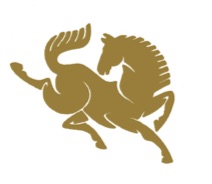So you’ve found your pilates connection, the scoop, or the b-line, however you phrase it that’s a huge accomplishment! If you’re at this phase the biggest question asked is, how do I take my mat practice in to the saddle? It’s not as complicated as you think, it’s more about being adaptable, and willing to let go and trust your connection.
For me as a Pilates instructor and dressage rider the exercises make perfect sense, in and out of the saddle, because quite simply, I am always riding. On the horse, off the horse, in my car, in my own Pilates practice, everywhere!!! It’s an obsession! Riding and Pilates is always an obsession, my body loves, and craves both. Therefore I am always playing with my connection, reading my body and it’s reaction to every day things. This is all very type A stuff and therefore somewhat controlling.
It’s no wonder then, that people get blocked trying to take this into the saddle. Here’s the secret. You have to open up to being a bit type B, in regards to your connection. It’s a balancing act. Over connect, over control, and you will create blockages in yourself and your horse. This is why my program comes with a mounted portion. I don’t expect my students to figure this out all on their own. I spend the time in the ring with you, and your trainer to fine tune and adjust the skills you learn on the mat, so that they are available in the saddle. The strength and length you learn on the mat translates fairly easily, understanding how and when to use it is more about feel and timing.
For an example lets take Seated Spine Twist. In this exercise we engage an active seat (active sitting exercise). We combine this with rotation. Done correctly in the saddle it works beautifully when you are learning how to bend a horse, create a better corner or circle, and also establish a better half halt. Pretty amazing for a seated exercise where you just twist, right? How does it do this? It engages your inner thigh and teaches pelvic lift, control, and balance. Then you are engaging your ribs, obliques, and lats. To finish it off you learn how to engage your shoulders blades to help keep you lifted and rotated. In the saddle on a bending line this teaches inside leg engagement, staying lifted and not falling in to the turn, and using your shoulders effectively to help bend your horse instead of just your forearm. It also helps with keeping the contact traveling from the inside leg and rein into your outside rein. This is just one of the many exercises that translate well into the saddle.
Knowing how? Knowing how much?
The next question is ok, how? Then quickly followed by how much engagement do I need? This is where you have to trust your connection and play. Every horse, and day is different, so you need to be adaptable and try asking and letting go. Remember if you fix your muscles you are working from tension. Instead of fixing and trying to force the horse to mold to your muscles, try engaging the exercise like the mat. Inhale prepare, exhale engage, inhale release, see if you got the response. If you did how long can your horse hold it on their own? If not try again using different degrees of engagement to convey the message. Sometimes you have to ask every other stride, that’s ok, be clear, ask, release, ask, release, until your horses response becomes quick, and they offer to hold it from a light aid. Like learning your connection, learning how to translate it takes time, patience, and practice. The beauty now is, you have a chance to practice out of the saddle, and bring it with you into your next ride.
